
|
JAPANESE PRINTS A MILLION QUESTIONS TWO MILLION MYSTERIES |
Ukiyo-e Prints浮世絵版画 |
|
Port Townsend, Washington |
|
A CLICKABLE INDEX/GLOSSARY (Hopefully this will be an ever changing and growing list.)
Kakure-mino thru Kentō |
|
|
The bird on the
walnut on a yellow ground is being used on white kiku mon in May. |
|
|
|
TERMS FOUND ON THIS PAGE:
Kakure-mino, Kamakurajidai, Kami, Kamishimo, Kammuri, Kamuro, Kani, Kankan, Cancan, Kanteiryu, Kanzashi,Kanzemizu, Kaomise, Kappa, Kara-kasa, Karazuri, Karigane,Kariyasu, Karuta-e, Karyōbinga, Kasa, Kasa, Kashiwa, Katabami, Kata-hazushi, Katsuo, Katsuobushi, Katsura, Katsureki-mono, Katsushika Hokusai, Kawakita, Kawatake Mokuami, Kawatake Shinshichi, Kaya, Kazami, Kazashi, Donald Keene, Keisai Eisen, Kemari, Kensaki, Kensaku and riken, Kentō and Ken'yakurei
隠れ蓑, 鎌倉時代, 神, 冠, 禿, 蟹, 看看, 勘亭流, 簪, 観世水, 顔見世, 河童, 唐傘, 空摺, 雁金, 刈安, 加留多絵, 迦陵頻伽, 傘, 柏, 酢奨草, 片外し, 鰹, 鰹節, 桂, 活歴物, 葛飾北斉, 河竹黙阿弥, 河竹新七, 蚊屋, 汗衫, 渓斎英泉, 蹴鞠, 剣先, 羂索 & 利剣 and 見当
かくれみの, かまくらじだい, かみ, かみしも, かんむり, かむろ, かに, かんかん, カンカン, かんてい.りゅう, かんざし, かんぜみず, かおみせ, かっぱ, からかさ, からずり, かりがね, かりやす, かるたえ, かりょうびんが, かさ, かさ, かしわ, かたばみ, かただ.ほり.ちょう, かたがみ, かたはずし, かつお, かつおぶし, かつら, かつれきもの, かつしか.ほくさい, かわきた, かわたけ.もくあみ, かわたけ.しんしち, かや, かざみ, かざし, ドナルド・キーン, けいさい.えいせん, けまり, etc. |
|
|
TERM/NAME |
KANJI/KANA |
DESCRIPTION/ DEFINITION/ CATEGORY Click on the yellow numbers to go to linked pages. |
|
Kakure-mino |
隠れ蓑 かくれみの |
Oh, to be a fly on the
wall. Who hasn't wanted to be that. Well, this goes one better: A cape of
invisibility. Whereas this may sound like a modern anime concept I know that
it goes back as far as 1821 if not earlier because it is represented in a
surimono by Hokusai from that time.
|
|
Quoted from: Shinto in History: Ways of the Kami, by John Breen and Mark Teeuwen, University of Hawaii Press, 2000, p. 32.
Quoted from: Symbols of Japan: Thematic Motifs in Art and Design, by Merrily Baird, Rizzoli International Publications, Inc., 2001, p. 239.
Above is a detail of two tengu by Toyokuni I. There is no invisibility cloak in this image - or is there? - but the image is just too good to pass up. |
||
|
|
||
|
Kamakurajidai |
鎌倉時代 かまくらじだい |
The Kamakura period 1185-1333 |
|
|
神 かみ |
Brian Bocking in A Popular Dictionary of Shinto begins his entry on kami with "A term best left untranslated. In Japanese it usually qualifies a name or object rather than standing alone, indicating that the object or entity has kami-quality. Kami may refer to the divine, sacred, spiritual and numinous quality or energy of places and things, deities of imperial and local mythology, spirits of nature and place, divinised heroes, ancestors, rulers and statesmen. Virtually any object, place or creature may embody or possess the quality or characteristic of kami, but it may be helpful to think of kami as first and foremost a quality of a physical place, usually a shrine..." (84) Later Bocking notes: "Although Shintō purists like to reserve the term kami for Shintō (rather than Buddhist) use, most ordinary Japanese make no clear conceptual distinction between kami and Buddhist divinities, though practices surrounding kami and Buddhas may vary according to custom. This accommodating attitude is a legacy of the thorough integration of the notion of kami into the Buddhist world-view which predominated in Japanese religion before the reforms of the Meiji period and has been to some extent revived since 1945, often through the new religions. This is despite the 'separation of kami and Buddhas' (shinbutsu bunri) of 1868, when deities enshrined both as Buddhist divinities and as kami of a certain location... had to be re-labelled as either Buddh/bosatsu or kami. In understanding Japanese religion, to think of kami as constituting a separate category of 'Shinto' divine beings leads only to confusion. The 'shin' of 'Shintō' is written with the same Chinese character as kami." (p. 85) |
|
W. Michael Kelsey in the introduction to his article "The Raging Deity in Japanese Mythology" published in Asian Folklore Studies (Vol. 40, No. 2, 1981, p. 213) gets right to the point: "The Japanese kami, an enigmatic creature if ever there was one, is not always a benevolent force living in harmony with human beings. Indeed, Japanese mythology is filled with accounts of deities who kill travelers through mountain passes; who rape, kill and eat women; or who bring epidemics on the people when dissatisfied with the upkeep of their shrines.2 Deities engaging in acts of violence were termed araburu kami 荒ぶ,る神 or raging deities, and their pacification posed a real problem for the ancient Japanese. As we shall see in the following pages, these deities often assumed the form of a reptile when engaged in their anti-social behavior, and although they cannot be called inherently evil, they were nonetheless a threat to human beings which needed to be dealt with."
|
||
|
|
||
|
Kamishimo |
裃
かみしも |
A costume worn traditionally by the samurai. In The Shogun Age Exhibition catalogue (entry #109, p. 129) there is a very striking image of an actual 19th century kamishimo. "The term is derived from the words kami (upper) and shimo (lower) and describes a garment of two such parts which have been designed to be worn together. In the Edo period members of the warrior class wore it as a ceremonial garment." For the daimyos and shoguns it was a 'simplified formal wear' and for those of lower social rank it was their Sunday finest. |
|
Kammuri |
冠
かんむり |
According to the Kodansha Encyclopedia of Japan (vol. 3, entry by Ishiyama Akira, pp. 118-19) there are three types of traditional Japanese headgear. One of these is the kammuri which translates literally as 'crown'. "Kammuri include highly ornate crowns decorated with gold and strings of beads as well as simpler caps of lacquered or soft fabric. In 604 noblemen were ordered to wear kammuri as part of their ceremonial or court dress following the Sui (589-618) China." In time the eboshi replaced the more formal kammuri. Worn during greetings, indoors and even while sleeping even though these 'crowns' served no practical purpose.
The image to the left is a detail from a Shigenobu print.
Note that the English spelling and the hiragana pronunciation differ slightly. This is a common occurrence when it comes to certain 'n' and 'm' sounds. Some sources refer to 冠 as kanmuri.
See also our entry on eboshi at our De thru Gen index/glossary page. |
|
Kamuro |
禿
かむろ
|
Assistant trainee to a courtesan. Often viewed in Ukiyo-e prints wearing finery which matches that of the courtesan.
"Contemporary commentators did not consider it particularly inhuman or immoral to introduce children to prostitution; on the contrary, they judged early training as beneficial in the production of better courtesans." Girls as young as seven or younger were sought out by scouts. Kyoto girls were thought to be more graceful, but any beautiful child was considered desirable. "The children of famine-stricken peasants or debt ridden townspeople were especially susceptible to the enticements offered by brokers." Sometimes selling their daughters was the only way to raise money. The good daughter was the one who would acquiesce to such arrangements. The parents could console themselves with the fact that the child would be better fed and clothed. "The only path by which a woman could escape her low social and economic lot was the pleasure quarter."
Source and quotes from: Yoshiwara: The Glittering World of the Japanese Courtesan, by Cecilia Segawa Seigle, University of Hawaii Press, 1993, p. 81-2. 1, 2
|
|
Kani |
蟹
かに |
Crab motif used occasionally as a family crest or mon. Popular as a military mon its choice may have been due the the look of the crab itself - armored and in some cases powerful and painful in its attack.
The example seen to the left is one of those marvels common to Japanese design and in particular to the variations possible in their family crests. Here the crab is actually a budding peony plant. At least that is what I think it is. Notice how the eyes are buds getting ready to open. |
|
Kankan |
看看 かんかん |
An exotic regional 'snake' dance which was imported into Edo from Nagasaki in 1822. |
|
Now, you may be asking yourself "Why has he put that entry in here?" Well, I'll tell you. First, it is from an article by Andrew L. Markus published by the Harvard Journal of Asiatic Studies and that accounts for its pedigree and second it struck me as an odd term which sounded too much like the Offenbach (オッフェンバハ)cancan. However, the fact that they are homonymous is strictly a coincidence. The coincidence is even more striking since they both refer to types of dances. Other than that they have no connection whatsoever.
Note: The Japanese character 看 means 'to watch'. Perhaps when doubled this has something to do with the exoticism of this style of performance - sort of like "You should see this!" However, I am just speculating here. Markus does add that this dance may be of Chinese origin. |
||
|
|
||
|
(Cancan) Read the entry above this one to see why we have put this here. |
カンカン |
A French dance made famous by the music of Jacques Offenbach (ジャック.オッフェンバハ) and the images of Toulouse Lautrec (トゥールーズ.ロートレック). |
|
Kanteiryu |
勘亭流
かんてい.りゅう |
The calligraphic style of thick, rounded, crowded strokes commonly used by kabuki theater. Okazakiya Kanroku (1746-1805: 岡崎屋勘六 or おかざきやかんろく)is credited with its creation in 1779. 1 |
|
Kanzashi |
簪
かんざし |
Ornamental hairpin (See also our entry on kōgai.) 1
Such elements showed up everywhere: towels, gift wrapping, toys, games, magic lanterns, clothes, undergarments and even the robes of little girls.
Source and quote from: The Writings of Lafcadio Hearn, edited by Elisabeth Bisland, Houghton Mifflin Company, 1922, pp. 343-50. |
|
Kanzemizu |
観世水
かんぜみず
|
A water pattern with eddies. The top example to the left is from a detail of a Kotondo print and the bottom one is a detail from a Shoun (1870-1965: 山本昇雲 or . やまもと.しょううん) Merrily Baird in her Symbols of Japan: Thematic Motifs in Art and Design (p. 42) notes that this design represents the waters of rivers and ponds.
A note: I own several Japanese English dictionaries and kanzemizu does not appear in any of them. For that reason I am unable to determine how long this word has been in use. By way of analogy, perhaps the names given to decorative patterns are similar to the names given to flowers or varieties thereof. They may be too specialized to be found in the standard sources. |
|
Kaomise |
顔見世 かおみせ |
Anyone who studies Edo culture in general and the kabuki aspects in particular will run across the term kaomise frequently. It literally means 'face-showing' which is the Japanese expression for the debut of the new theater season.
Source and quotes from: New Kabuki Encyclopedia: A Revised Adaptation of kabuki jiten, compiled by Samuel L. Leiter, 1997, p. 282. |
|
Kappa |
河童
かっぱ |
Nasty little supernatural creature which wreaks havoc with humans and other animals. Noted for the bowl shaped indentation in the top of their heads which holds water and is their source of strength. Oh, yeah, they are also fond of wrestling.
This image was provided by my friend M. 1
One more, one last thing: For more about kappas and flatulence in general in Japanese society go to our page devoted to our Yoshitoshi print we call "Kappa control". |
|
|
唐傘
からかさ |
The print to the left shows the actor Arashi Sangorō III pretending to be an umbrella monster. The accompanying poem reads: "My flower umbrella/ tattered and worn/ in the guise of a monster!" Julia Meech wrote: "A one-legged umbrella monster with a long tongue appeared on the scene with the surge of ghost plays in the early 19th century.... The knee of Sangorō's retracted left left is just visible under the rim of the umbrella.... This umbrella demon has a depression on his head, suggesting that he is doubling as a kappa, another nasty goblin from Japanese folklore..."
Source and quotes from: Rain and Snow: The Umbrella in Japanese Art, by Julia Meech, Japan Society, Inc., 1993, cat. entry #92, p. 118.
The image shown above is a detail from a book illustration also by Toyokuni I.
In their authoritative book on surviving Japanese monsters Hiroko Yoda and Matt Alt have a whole section on the 'Haunted umbrella'. It is paired with the 'Haunted lantern' because they are often seen together. They are known for their "Freakishly large tongue... [and] Single gnarly leg..." Their "Offensive Weapons" are "Bronx cheers, eerie moans, [and] erratic movement." Their weakness: Being ignored. They hate that, but that is okay because they have very short attention spans. Also, there is no record of their ever having actually injuring or killing anyone.
"The most popular portrayal of the Kara-kasa, whose name simply means 'paper umbrella' or 'paper parasol,' is of a cyclopean umbrella with a lolling tongue and a gross-looking hairy male leg in place of a handle, but other versions - perhaps subspecies? - have been reported as well." Sometimes they have two eyes shown close together and sometimes just one.
Source and quotes: Yokai Attack! The Japanese Monster Survival Guide, by Hiroko Yoda and Matt Alt, Kodansha International, 2008, pp. 106-109.
|
|
Karazuri |
空摺 からずり |
Blind printing or embossing. |
|
Karigane |
雁金
かりがね
|
Wild geese crest or
mon: According to Merrily Baird the return of migrating geese was so
important that it gave its name to the 8th lunar month. This is not so odd
when one considers how the months and days got their names in the West.
Source: Symbols of Japan: Thematic Motifs in Art and Design, pp. 111-112.
John W. Dower (The Elements of Japanese Design pp. 94-5) that in some of the earliest depictions of flying geese in Japanese art a simple "v" was used. Later when geese were portrayed in crests the head was added. However, the form seen to the left is referred to as the "knotted goose". These two stylistic approaches were far more popular in the use of family mons than more realistic examples.
|
|
The other night - today is March 30, 2007 - I was reading Roger Keyes catalogue of the Osaka prints in the Philadelphia Museum of Art and ran across an entry about two death or memorial prints dedicated to the passing of a famous actor. One shows Utaemon IV accompanied by 'his farewell poem': "Returning geese, if you are going to the country of the west, please take me with you." Keyes notes that "Migrant geese often appear in memorial or farewell poems. The country of the west is Amida Buddha's Western Paradise."
Source and quote from: The Theatrical World of Osaka Prints, by Roger S. Keyes and Keiko Mizushima, Philadelphia Museum of Art, 1973, p. 188.
That led me to dig a little deeper. I remembered a reference to bird dances from the Kojiki, the most ancient Japanese text which portrays indigenous, non-Buddhist beliefs. "Bird bones have been found resting on the chests of ancient human skeltons, and the Kojiki alludes to a custom whereby mourners dress up as birds. The evidence suggests, then, that the ancient Japanese believed that the dead turned into birds, or perhaps birds carried them to another world."
Quote from: Japanese Death Poems: Written by Zen Monks and Haiku Poets on the Verge of Death, introduction and commentary by Yoel Hoffmann, Charles E. Tuttle Company, 1996, p. 34.
There is also a reference in the Kodansha Encyclopedia of Japan (Vol. 3, p. 13 - entry by Saitō Shōji) which states that "In the reign of the legendary emperor Nintoku in the KOJIKI (712), there is an anecdote in which the laying of an egg by a goose was taken as an auspicious sign of the emperor's enduring rule. (Geese normally do not lay eggs during the season of their stay in Japan.)" Geese are also used as a poetical allusion to the coming of autumn.
The image to the left of flying geese is a detail from a print by Bunrei and was sent to us by our generous contributor E. Once again thanks E! |
||
|
|
||
|
Kariyasu |
刈安
かりやす
|
Kariyasu or Miscanthus tinctorius: This is one of the plants - a grass, in fact - used to create a yellow colorant in dyeing fabrics. Apparently it was also used in printing woodblock images although none of the contemporary books on technique seem to make references to it. Perhaps this is due to the fact that this was one of the colors which faded greatly and therefore would not be part of the palette of modern printers. However, it is mentioned in Japanese Woodblock Prints: A Catalogue of the Mary A. Ainsworth Collection by Roger Keyes as one of the early traditional organic colorants. (cf. "Identification of Traditional Organic Colorants Employed in Japanese Prints and Determination of their Rates of Fading" by Feller, Curran and Bailie - pp. 253-261.)
Miscanthus tinctorius is a tall grass which grows on the slopes of mountains. These images taken by Shu Suehiro were from his hike on Happō One Mountain in the Japanese Alps not far from Nagano. A popular ski area in the winter it is considered a great hiking region during warmer months.
According to the Museum of Fine Arts, Boston this yellow "...dye is primarily composed of anthraxin and related flavonoids..." which are mainly luteolin glycosides. They also note that when the mordant is alum this colorant is not very lightfast. Perhaps that is why it is so difficult for us today to identify this colorant in early prints.
When fresh, I believe, this dye can be a bright yellow. When mixed with other dyes everything from mustard yellow to a moss green can be produced.
In an article by Watanabe Hitoshi and Takahashi Yasuhiro published in the "Bulletin of Japan Association of Botanical Gardens" in 2006 they stated that "...the true M. tinctorius population is very small.... The length of beard at the tip of the spikelet and the density of down on the leaf blade are the most important features" The spikes are discarded and only the stem and leaves are used [in creating the dye.] The harvest should be dried quickly before soft, ground water with the least number of impurities is added. Camellia ash helps bring out the brightest color.
Shu Suehiro has very generously given us permission to use the three photos to the left. He operates a wonderful and expansive web site dedicated to Japanese plants. We would urge you to take a look. There is much of interest there.
http://www.botanic.jp/index.htm
The cell color to the left is kariyasu yellow.
Don't forget that color descriptions are not exact. As there are many shades of green or blue for example, there are many slight variations within each of the colors shown here which may or may not conform precisely to your own perceptions of what they should be. |
|
Karuta-e |
加留多絵
かるたえ |
Playing card picture(s): The image to the left is by Shunsho (春章 or しゅんしょう) and Shigemasa (重政 or しげまさ) from the 1776 edition of the "Seiro bijin awase sugata kagami" (青楼美人合姿鏡 or せいろう.びじん.あわせ.すがた.かがみ).
This image was generously contributed to our site by E. Thanks E!
|
|
Karyōbinga |
迦陵頻伽 (?)
かりょうびんが |
A heavenly singer. Half-bird, half-human. Its voice is likened to that of the Buddha. In Royall Tyler's translation of "The Tale of Genji" (vol. 1, chap. 7, p. 135 Genji's voice is praised 'to the heavens': "His singing of the verse could have been the Lord Buddha's kalavinka voice in paradise." It brought the emperor to tears. Arthur Waley in his translation (p. 150) states: "...and in the song which follows, the first movement of the dance his voice was sweet as that of Kalavinka whose music is Buddha's law." Seidensticker (p. 140) said that Genji's audience "...could have believed they were listening to the Kalavinka bird of paradise." |
|
The karyōbinga is the Japanese name of the kalavinka, i.e., the bird which sings in paradise. Long before the introduction of Buddhism the Japanese had a traditional lore devoted to human/bird hybrids. They appear in the Kojiki which is the earliest written account of Japan's distant past.
As of now we don't have an example of a karyōbinga in an ukiyo print which we can display here, but we are almost positive we have seen one somewhere. If anyone can help us in this search please contact us.
We know such a thing exists because there is a hand-colored print by Torii Kiyomasu I in the Boston Museum of Fine Arts with a karyōbinga. Dated from the first decade of the 18th century it illustrates a scene from a kabuki play "The Treasure Boat of the Land of Brahma" (Bontenkoku takarabune - 梵天国宝船 or ぼんてんこく.たからぶね). Remember - many early kabuki plays had a strong religious element to them and that this figure is not to be confused with other bird-men (or -women, if you like.) |
||
|
|
||
|
Kasa |
傘 かさ |
An umbrella |
|
Kasa |
笠
かさ |
(Bamboo) hat: "The sedge hat had patrician rather than peasant association in traditional Japan, and thus it was not anomalous that the haughty upper classes developed this as a design."
Quoted from: The Elements of Japanese Design, by John W. Dower, p. 114. |
|
Kashiwa |
柏
かしわ |
The oak leaf was once used as a surface for offerings to the gods. "By the late Heian period, the oak tree was regarded as the residence of the protective deities of forests and groves. This was one of the more popular crests among the warrior class, particularly among close devotees of Shinto."
Quoted from: The Elements of Japanese Design, by John W. Dower, p. 114.
Remember there are numerous other variations on this motif which were used as crests or mons. |
|
Katabami |
酢奨草
かたばみ
|
The oxalis or wood sorrel: "In the early days in Japan, the leaf of the wood sorrel was used to make a medicinal salve, and also to polish mirrors." Popular as a design during the Heian period it was often later used by member of the warrior class. Because the plant spread prodigiously warriors saw this as an auspicious sign of their own fertility. An added martial element to the katabami mon or crest was the insertion of blades radiating outward as in the example to the left.
Source and quote from: The Elements of Japanese Design, by John W. Dower, p. 84.
Remember there are numerous other variations on this motif which were used as crests or mons.
The image to the left on the bottom is shown courtesy of Paghat the Ratgirl who offers a wonderful and literate web site about plants - and so much more. Do yourself a favor and visit it often at: |
|
Katada Hori Chō (aka Katada Chojirō) |
斤田
かただ.ほり.ちょう |
Master carver of woodblocks working in the early 1860s to as late as 1878. We know that he worked for more than one publisher: Kakumoto-ya Kinjirō, Izutsu-ya, Ise-ya Zenazburō, Etsuka, Tsunoi and Arai Kisaburō. His seal appears on prints of Toyokuni III, Kunichika and Chikuyo. |
|
Katagami |
型紙
かたがみ
|
Literally 'paper pattern': Mulberry paper specially treated with astringent persimmon juice cut into intricate and delicate patterns to be used as stencils for fabric designs. Known since the 12th century these stencils were used to produce katazome. Ukiyo prints are rife with such dye-resist kimonos.
To the left are the cover (below) of Carved Paper: The Art of Japanese Stencil, the best book on the subject out there in English. (Edited by Susan Shin-Tsu Tai with contributions by Susanna Campbell Kuo, Richard L. Wilson and Thomas S. Michie, published by the Santa Barbara Museum of Art and Weatherhill, Inc., 1998)
The top image is a detail of the leaping fish on the cover. Notice the fine threads which help hold the delicate design together. Some katagami have such threads and some do not.
|
|
Kata-hazushi |
片外し
かたはずし |
A hairstyle of a palace servant.
At various times sumptuary laws were enacted by the ruling powers in an attempt to control social behavior. This extended to artists and their publishers and pretty much everyone else. Certain images were proscribed and it became a battle of wills as to who could outwit whom. In The Passionate Art of Kitagawa Utamaro (text volume, p. 247) Timothy Clark (ティモシー .クラーク) commented on this by addressing the subject of altered forms.
One Utamaro print clearly shows a woman wearing a kata-hazushi hairstyle. A different, but still original printing show another hairstyle.
"A second printing exists in which the head area of the block has been plugged and recarved with a normal Katsuyama-style hair-do... Perhaps this was done to avoid any possible censure from the authorities for showing a hair-style immediately associated with a samurai household."
The detail to the left is not one of those Utamaro examples, but is from a print by Toyokuni I. |
|
Katsuo |
鰹
かつお |
Bonito
The detail to the left is from a print by Hiroshige. |
|
Katsuobushi |
鰹節
かつおぶし |
Dried bonito. The image to the left shows these dried pieces of fish incorporated into a woven wreath. 1 |
|
Katsura |
桂
かつら |
One of several woods like hōnoki and yamazakura used to print woodblocks. This type is often used in modern printmaking. 1 |
|
Katsureki-mono |
活歴物 かつれきもの |
Kabuki's 'living history plays' 1 |
|
Katsushika Hokusai |
葛飾北斉
かつしか.ほくさい |
Major 19th c. artist (1760-1849).
The image to the left was sent to us by our generous correspondent E. and is one of that collector's favorite images. Thanks E! 1 |
|
Kawakita |
かわきた |
A village where a special kind of ganpi was made. 1 |
|
Kawatake Mokuami |
河竹黙阿弥 かわたけ.もくあみ |
Kabuki playwright 1816-93 1 |
|
Kawatake Shinshichi |
河竹新七 かわたけ.しんしち |
(See above) A name used by Mokuami until 1880. 1 |
|
Kaya |
蚊屋
かや |
Mosquito net: There is a small but beautiful group of three prints by Utamaro each showing two women, one under or behind mosquito netting and the other nearby just outside of it, dating from ca. 1794-5. Inspired either by Utamaro or his publisher Tsutaya these prints are remarkable examples of the carver's and printer's art. Poetically entitled "Woven in Mist" or kasumi-ori (靄織 or かすみおり) the name captures it all. (Actually the full title is "Model Young Women Woven in the Mist", but I think you get my point.)
The detail from the print to the left is not by Utamaro but by Kunisada created several decades later. Nevertheless, this image makes it clear how refined the representation of the mundane could be even in woodblock form.
Source: The Passionate Art of Kitagawa Utamaro, published by the British Museum Press, London, 1995, Text volume, p. 149. |
|
Kazami |
汗衫
かざみ |
A formal type of Heian court clothing for women. The character 汗 or ase means sweat or perspiration.
The image to the left was sent to us by E. our wonderful contributor. It is a detail from a 1789 book illustration by Shunsho portraying a Heian poetess in kazami garb.
Thanks E! |
|
Kazashi |
翳 かざし |
While doing
research on Japanese fans I ran across a reference to the kazashi
which I thought was too good to pass up. U. A. Casal in his
"Lore of the Japanese Fan" (Monumenta Nipponica, vol.
16, no. 1/2, 1960, p. 94) wrote: We may note that long into historical
timer; the nobles of Japan used a so-called kazashi", a fan-shaped object
with a long handle, to
For more information in general on fans see our entries on ōgi and uchiwa. |
|
Keene, Donald |
ドナルド・キーン |
Contemporary expert on Japanese literature and culture. 1, 2 |
|
Keisai Eisen |
渓斎英泉 けいさい.えいせん |
|
|
Source and quotes from: Kodansha Encyclopedia of Japan, entry by Roger Keyes, vol. 4, pp. 189-90.
Quoted from: Kunisada's World, by Sebastian Izzard, Japan Society, Inc., 1993, p. 26.
Ibid, p. 29.
Quote from: The Art of Japanese Prints, by Richard Illing, published by Gallery Books, 1983, p. 82.
Ibid., p. 106.
|
||
|
|
||
|
Kemari |
蹴鞠
けまり |
An ancient ball game akin to hacky-sack in which a small group of noblemen attempt to keep a ball in the air for the longest time. It originated in China and was first mentioned in ca. 720 in the Nihon Shoki. The field was a small area bounded by trees and the ball was covered in deerskin. Soccer players practice similar moves among themselves as warm up exercises.
Lea Baten in her Playthings and Pastimes in Japanese Prints (p. 138) notes that there were two versions of this 'game'. In the other one "...a leather ball, stuffed with horsehair and shaped like two flattened ball halves sewn together, was kicked between goalposts of flowering trees."
The image to the left is a detail from a print by Chikanobu. It was sent to us by our generous contributor Eikei (英渓). Thanks Eikei! |
|
Kensaki |
剣先 けんさき |
Point of a sword and a term describing the shape of a squid. |
|
Kensaku and riken |
羂索 & 利剣
けんさく & りけん |
As I have noted before there seems to be a word for just about everything. And so it is with the two items held by Fudō Myōō, one of the five wise kings of Buddhism. He carries a sword referred to as riken with which he will destroys all of the enemies of Buddhist doctrine and the special cord called kensaku with which he lassoes souls worthy of salvation.
The image to the left is a doctored detail from a print by Toyokuni III. |
|
Kentō |
見当
けんとう
|
The kentō is the registration marks carved on the printing block which allows the accurate alignment of numerous colors using many blocks for a single image. It is made up of two parts: The "L" shaped section called a kagi (鍵 or かぎ); and the "straight-line guide or trait carved on the block at a short distance from..." the kagi called the hikitsuke (溝? or ひきつけ).
The image to the left was provided by David Bull the originator of the Baren Forum. Clearly it does not represent the carved block itself, but rather comes from the printing of the hanshita (see our entry on that term) from that block. A printed image done in this manner obviously reverses the lines of the block. That is, the kagi on the carved block is placed in the lower right hand corner.
After posting the original entry the other day with the print of the little boy in the boat by David Bull our generous contributor E. sent us a fanciful example by Kuniyoshi which distinctly shows the kagi in the lower right. Unfortunately the hikitsuke does not appear on this copy.
Thanks E!
|
|
|
儉約令 けんやくれい |
Sumptuary laws: [Think 'sumptuous'] - Laws meant to maintain traditional distinction between classes by regulating the consumption of articles or controlling luxuriant life styles. "They appear to increase in frequency and in minuteness from about the middle of the seventeenth century through the next two centuries of the regime."
Source and quote: 'Sumptuary Regulation and Status in Early Tokugawa Japan’ by Donald H. Shively, Harvard Journal of Asiatic Studies, Vol. 25, (1964 - 1965), p. 124.
|
|
It was galling to the upper classes, i.e., samurai and daimyo, to see commoners wearing expensive garments. "The government therefore prescribed that consumption should be correlated precisely with status." (p. 126) There had been an attempt to prohibit embroidery from women's clothes, among other things, but this effort had failed. So, the government decided that only elaborate embroidery should be banned. More warnings were posted. Word was spread that a woman had been jailed for this offense. (p. 127) [One can't help but think of modern attempts being made in Christian and Islamic nations to impose dress codes on their populations.] An account from 1681 states that the shogun noticed that the women from a merchants household were 'over-dressed'. For this effrontery the man's lands and property were confiscated and he was banished. (128)
|
||
|
|
A thru Ankō |
|
|
Aoi thru Bl |
Bo thru Da |
De thru Gen |
Ges thru Hic |
Hil thru Hor |
|
Hos thru I |
|
J thru Kakure-gasa |
|
Kesa thru Kodansha |
|
Kōgai thru Kuruma |
|
Kutsuwa thru Mok |
Mom thru N |
3.jpg) O thru Ri |
Ro thru Seigle
|
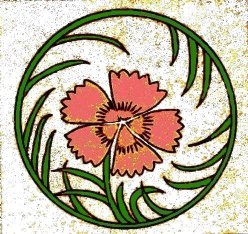 Sekichiku thru Sh |
|
Si thru Tengai |
Tengu thru Tsuzumi |
|
Yakusha thru Z |
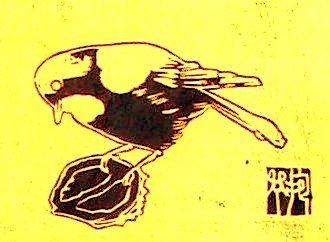
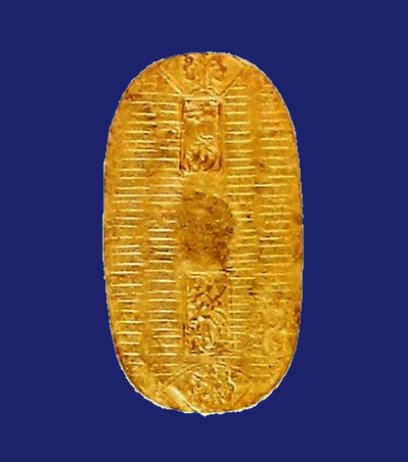
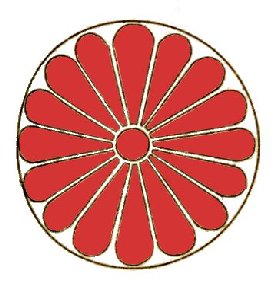
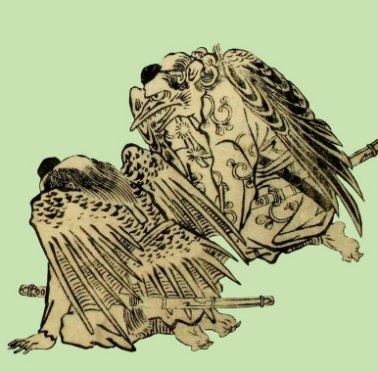
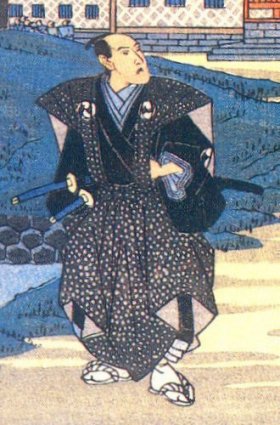
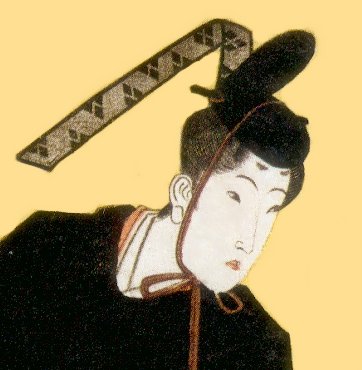
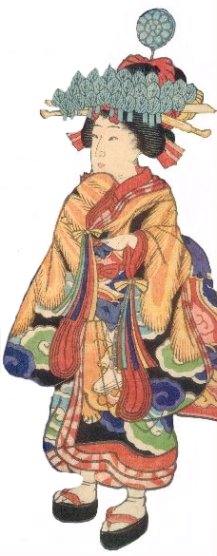
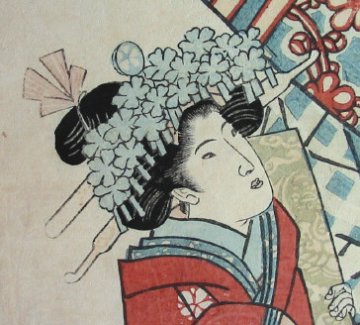
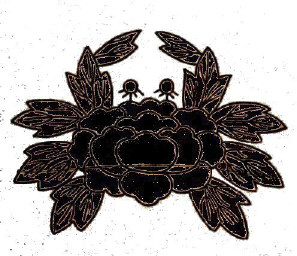
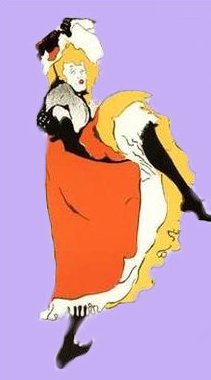
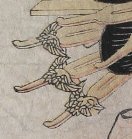
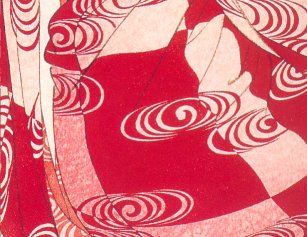
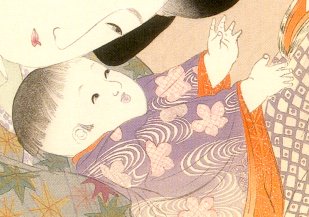
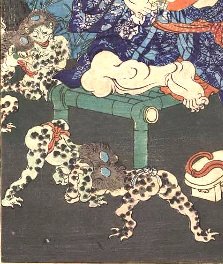
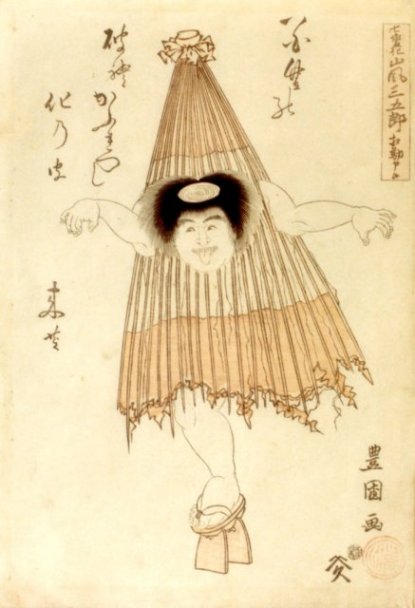
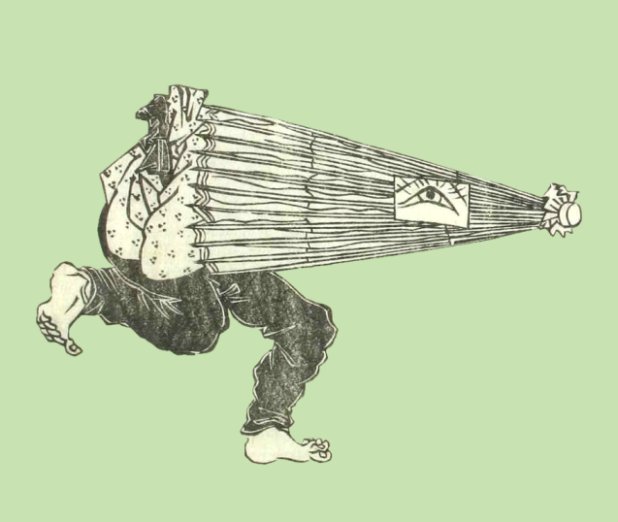
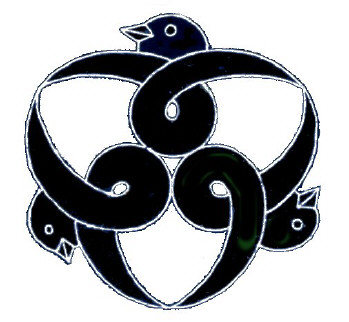
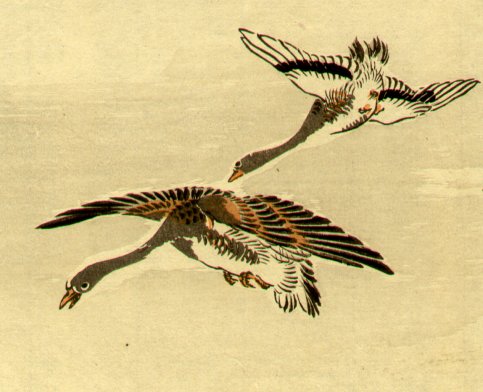
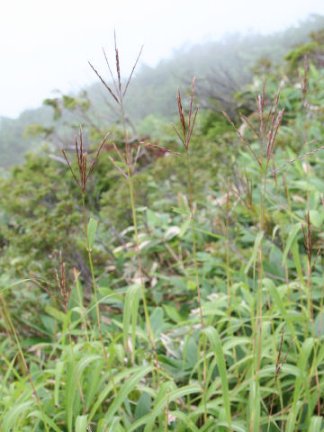
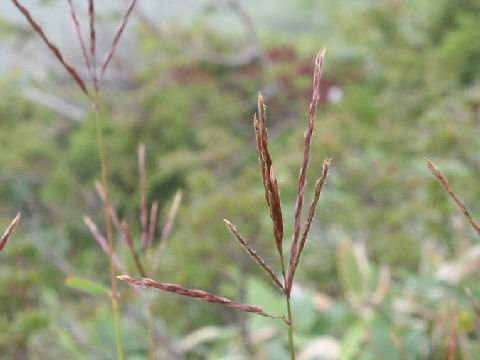
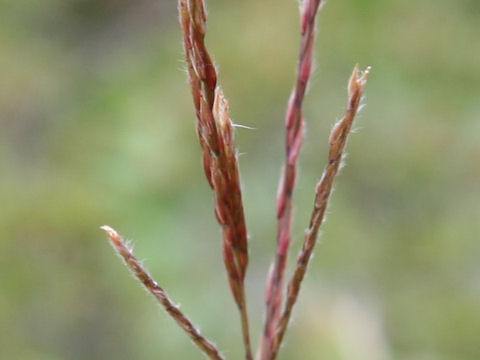
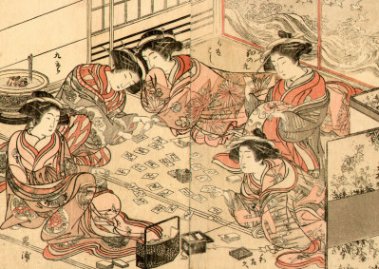
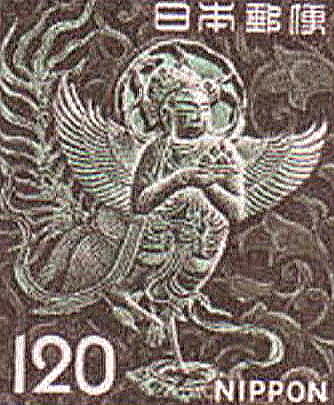
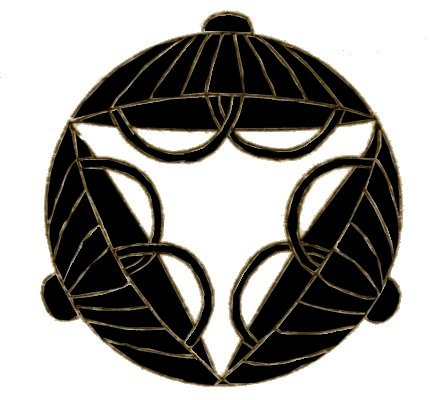
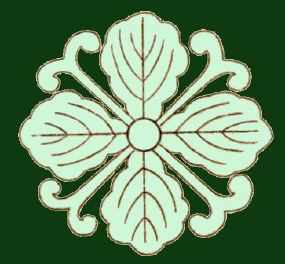
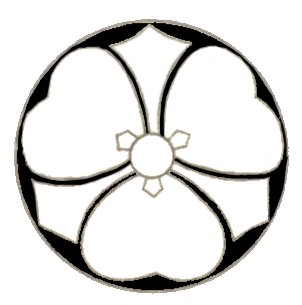
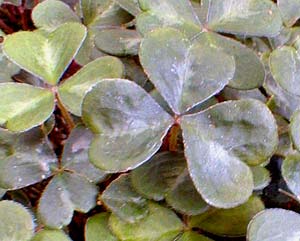
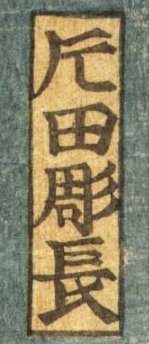
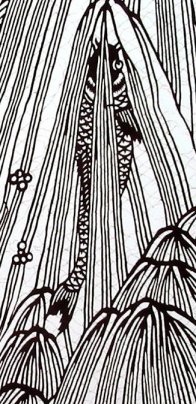
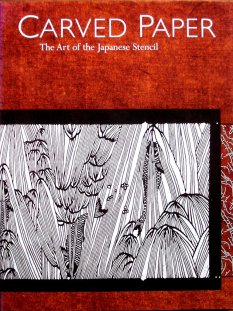
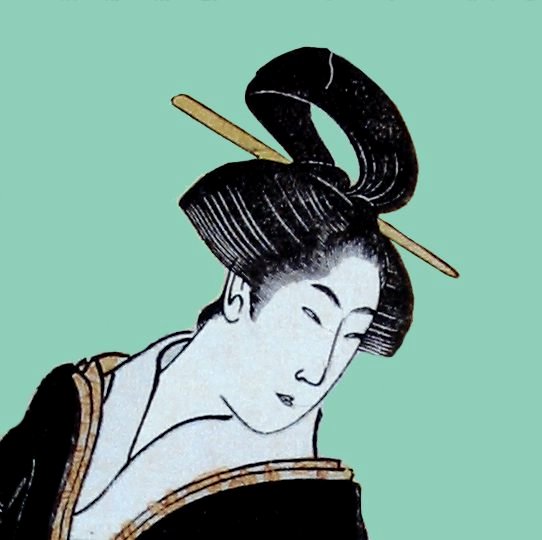
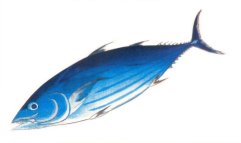
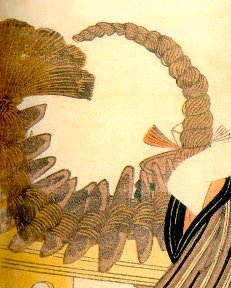
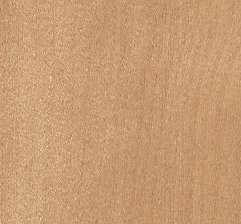
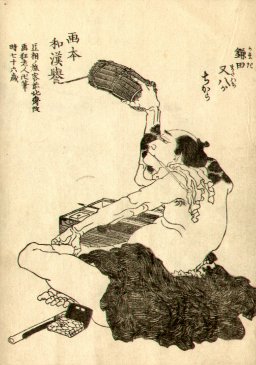
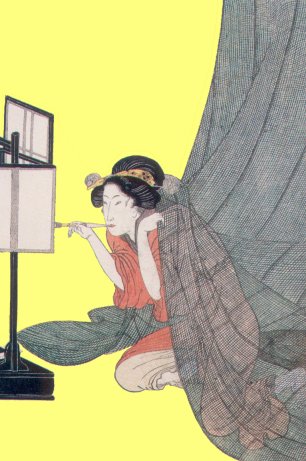
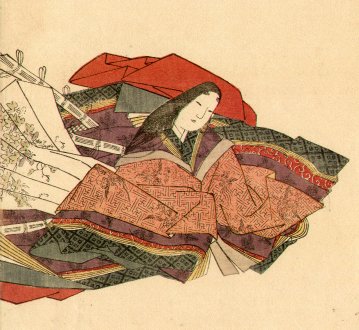
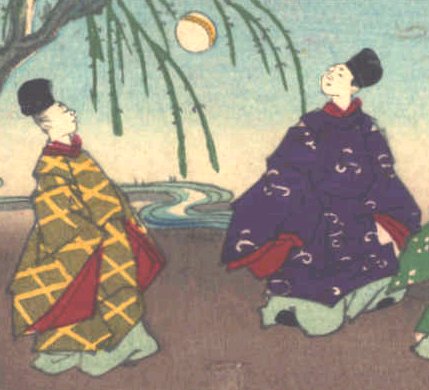
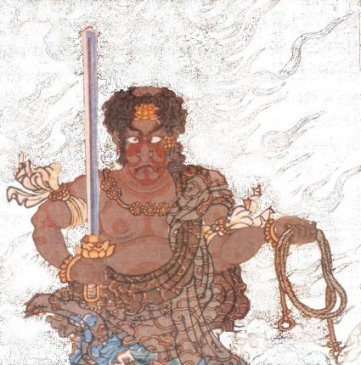
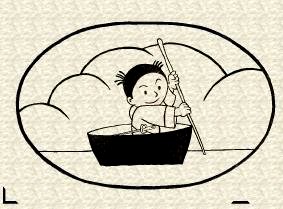
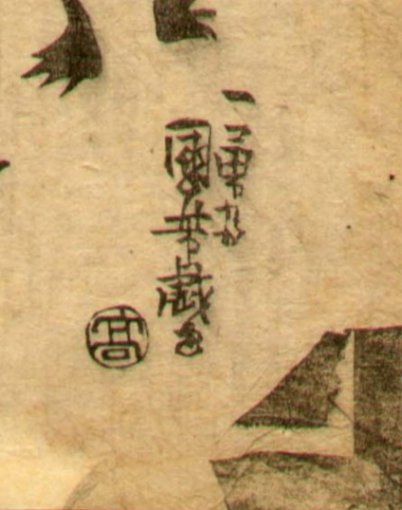
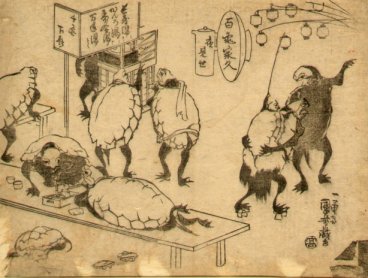
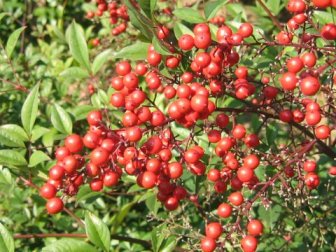
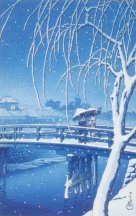
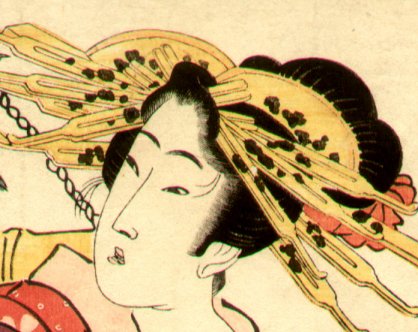


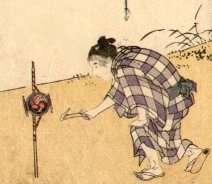
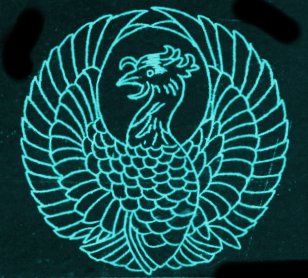
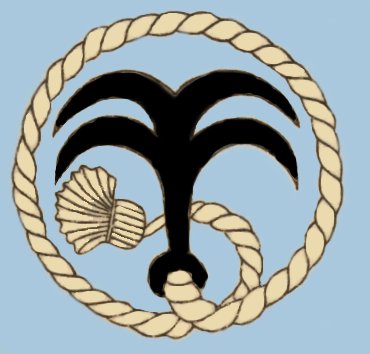
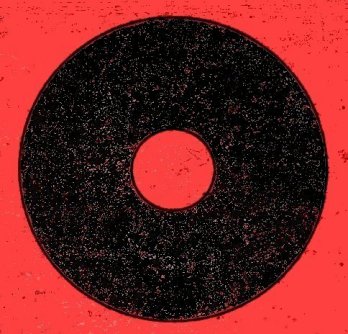
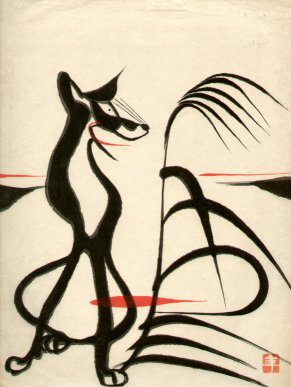
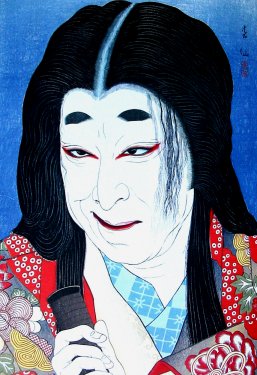
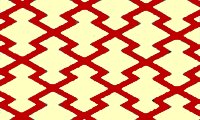
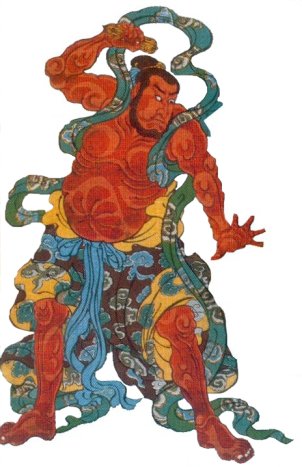
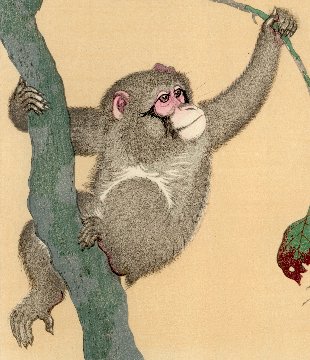
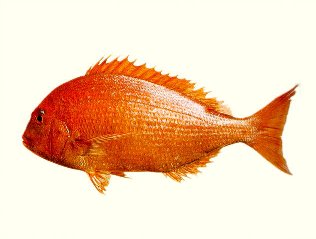
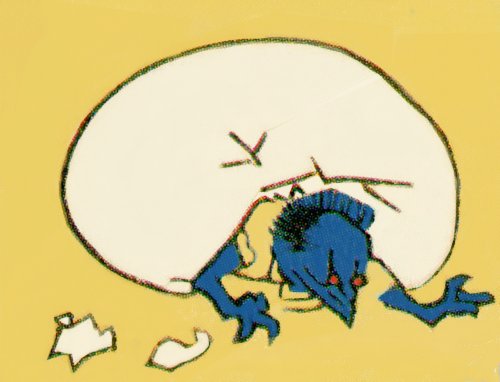
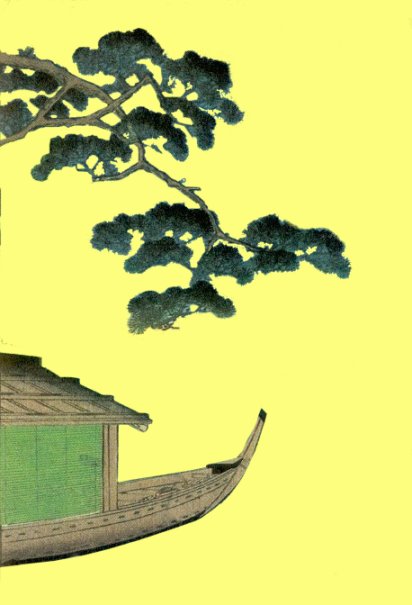
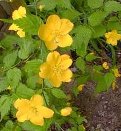
 HOME
HOME